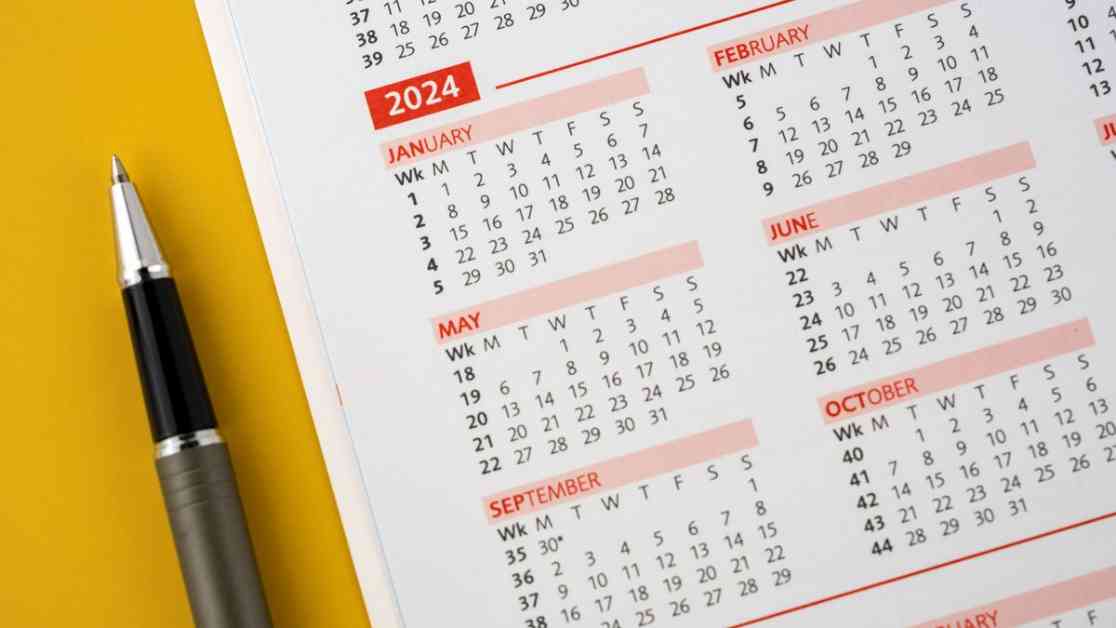Throughout history, humans have used different ways to measure time, including seconds, minutes, hours, days, weeks, and years. But have you ever wondered how many weeks are in a year? In a regular year, there are 52 weeks and one extra day. However, in a leap year, which comes around almost every four years, there are 52 weeks and two extra days.
The concept of timekeeping dates back thousands of years. Early civilizations, like the Egyptians and Sumerians, used the positions of the sun and moon to track time for religious purposes. The Gregorian calendar, the most widely used calendar today, is based on the Earth’s movement around the sun. It was created in 46 B.C. by Julius Caesar, but it wasn’t perfect.
The Julian calendar, implemented by Caesar, added an extra day every four years to account for the Earth’s orbit. However, a year is actually 365.2422 days, not 365.25 days as the Julian calendar assumed. Over time, this small discrepancy led to a misalignment of the calendar with the actual solar year. By the 1600s, the calendar was off by about 10 days, causing issues with religious holidays like Easter.
To correct this error, Pope Gregory XIII introduced the Gregorian calendar in 1582. He skipped 10 days to realign the calendar with the solar year and also adjusted the leap year rule. According to the new rule, any centurial year not divisible by 400 would not be a leap year. This change made the calendar more accurate and ensured that holidays were celebrated at the correct times.
While some countries quickly adopted the Gregorian calendar, others, like England, resisted due to religious differences. It took until 1752 for England to switch over. China, on the other hand, stuck with its traditional lunar calendar until 1912. Even after adopting the Gregorian calendar, China didn’t fully implement it until 1929.
In 1923, the leap year system was further refined by the Serbian astronomer Milutin Milankovi?. The new rule stated that any year not divisible by 100, except for those leaving remainders of 200 or 600 when divided by 900, would not be a leap year. This adjustment increased the accuracy of the calendar and will keep it aligned with the Gregorian calendar until 2800.
Despite these advancements, not all branches of the Eastern Orthodox Church have adopted the Milankovi? calendar. The history of timekeeping and calendars is a fascinating journey that reflects humanity’s efforts to make sense of the passage of time.










